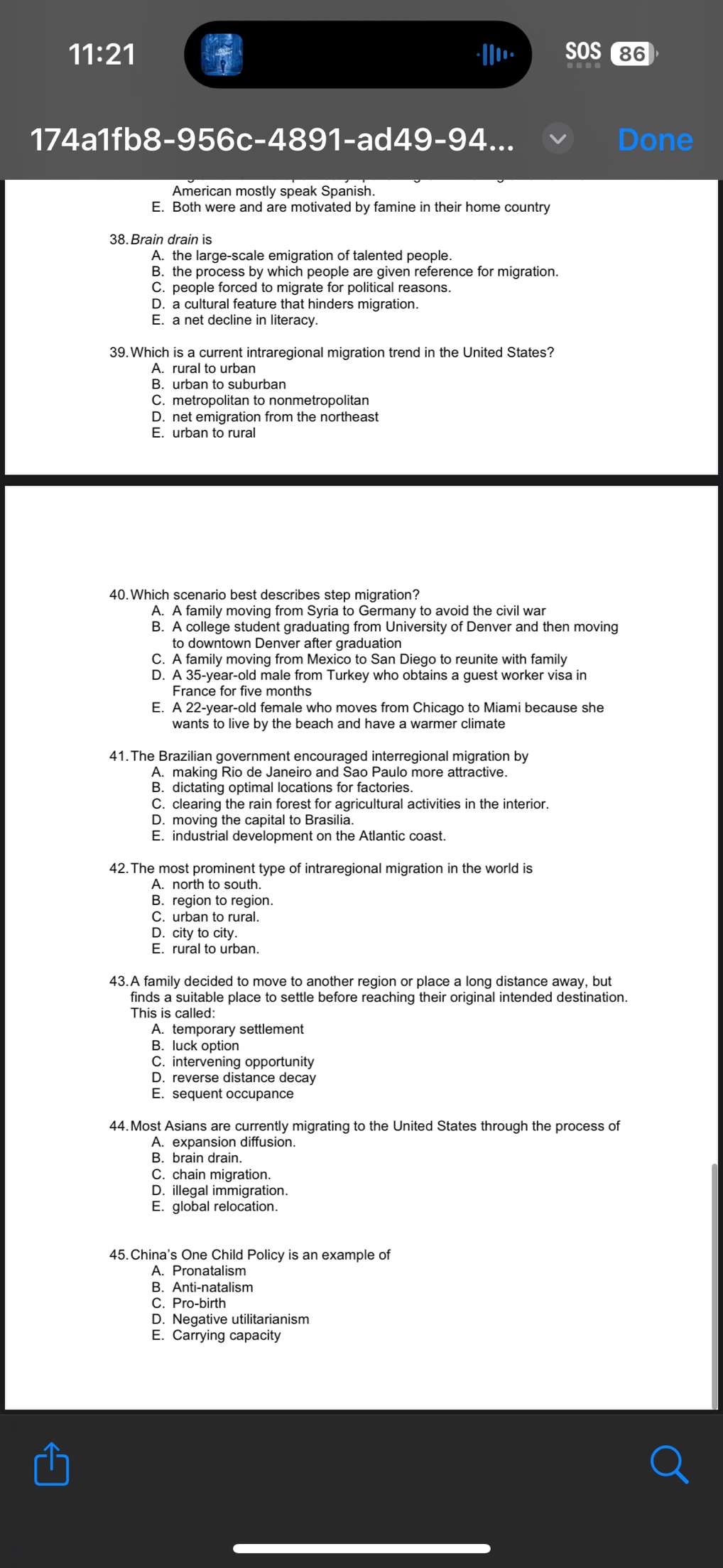Brain drain is A. the large-scale emigration of talented people. B. the process by which people are given reference for migration. C. people forced to migrate for political reasons... Brain drain is A. the large-scale emigration of talented people. B. the process by which people are given reference for migration. C. people forced to migrate for political reasons. D. a cultural feature that hinders migration. E. a net decline in literacy. Which is a current intraregional migration trend in the United States? A. rural to urban B. urban to suburban C. metropolitan to nonmetropolitan D. net emigration from the northeast E. urban to rural Which scenario best describes step migration? A. A family moving from Syria to Germany to avoid the civil war B. A college student graduating from University of Denver and then moving to downtown Denver after graduation C. A family moving from Mexico to San Diego to reunite with family D. A 35-year-old male from Turkey who obtains a guest worker visa in France for five months E. A 22-year-old female who moves from Chicago to Miami because she wants to live by the beach and have a warmer climate The Brazilian government encouraged interregional migration by A. making Rio de Janeiro and Sao Paulo more attractive. B. dictating optimal locations for factories. C. clearing the rain forest for agricultural activities in the interior. D. moving the capital to Brasilia. E. industrial development on the Atlantic coast. The most prominent type of intraregional migration in the world is A. north to south. B. region to region. C. urban to rural. D. city to city. E. rural to urban. A family decided to move to another region or place a long distance away, but finds a suitable place to settle before reaching their original intended destination. This is called: A. temporary settlement B. luck option C. intervening opportunity D. reverse distance decay E. sequent occupancy Most Asians are currently migrating to the United States through the process of A. expansion diffusion. B. brain drain. C. chain migration. D. illegal immigration. E. global relocation. China's One Child Policy is an example of A. Pronatalism B. Anti-natalism C. Pro-birth D. Negative utilitarianism E. Carrying capacity.

Understand the Problem
The question is asking about various aspects of migration, including definitions, trends, and policies related to migration. It seems to be part of a quiz or test on the topic of migration in a geographic or demographic context.
Answer
38. A, 39. B, 40. B, 41. D, 42. E, 43. C, 44. C, 45. B
The correct answers are: 38. A, 39. B, 40. B, 41. D, 42. E, 43. C, 44. C, 45. B.
Answer for screen readers
The correct answers are: 38. A, 39. B, 40. B, 41. D, 42. E, 43. C, 44. C, 45. B.
More Information
These answers focus on understanding different types of migration trends and policies, including brain drain, intraregional migration, step migration, and China's One Child Policy.
Tips
Ensure understanding of terms like 'brain drain' and 'anti-natalism', and how they apply to global migration patterns.
AI-generated content may contain errors. Please verify critical information